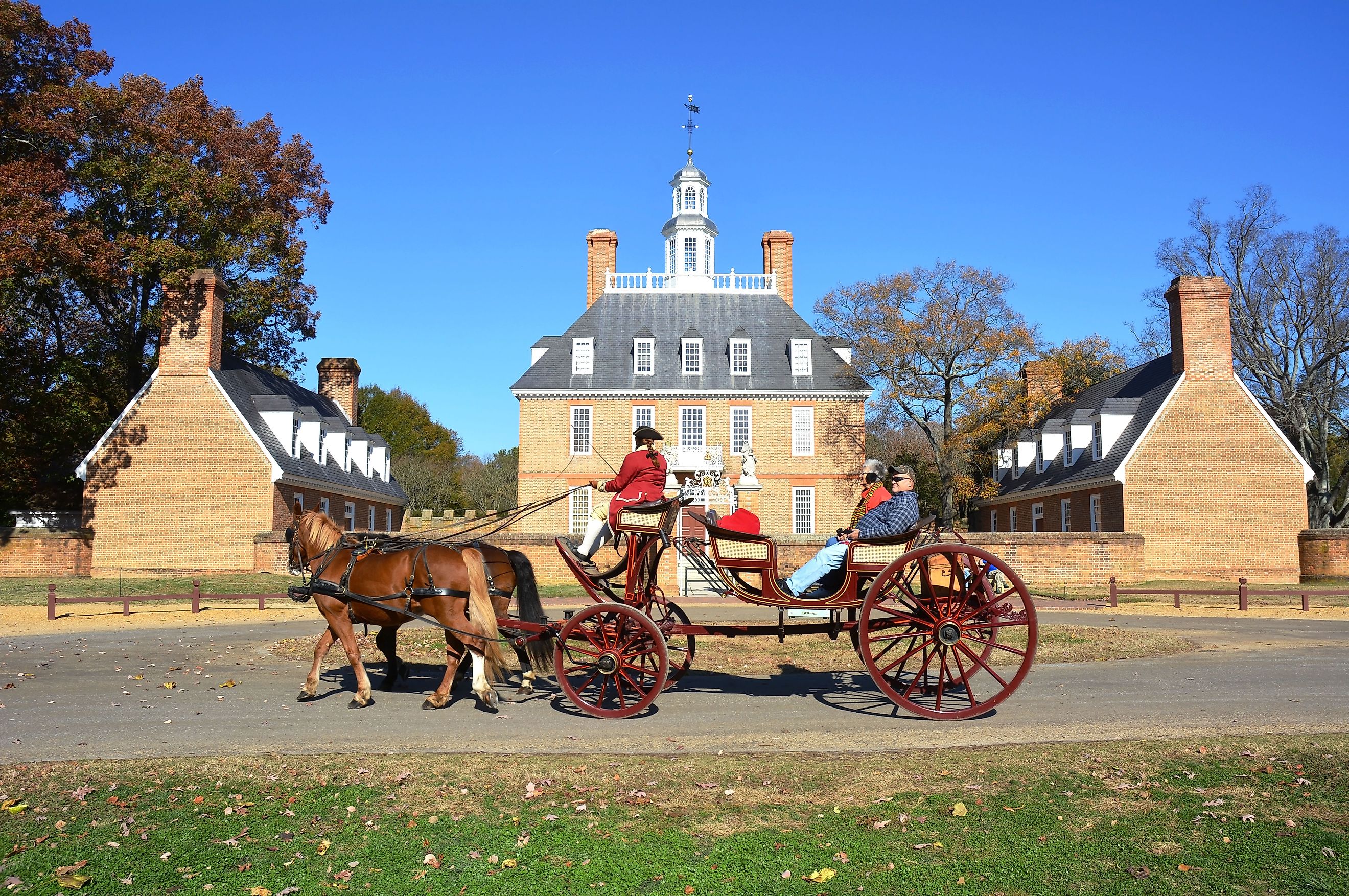
A Road Trip Through The Past In Colonial Virginia
A recent road trip through Virginia in search of the state’s colonial roots was an eye-opener. Traveling from the beautiful Shenandoah Valley region, a relative latecomer to the colonies (it was settled from the mid-1700s onwards) across to the site of the first coastal settlements founded some 100 years earlier, I came across evidence of Virginia's colonial past everywhere, often when I wasn’t even looking.
Although the 10th state to join the Union in 1788, some 12 years after American forces ejected the English to gain independence, Virginia had already been the scene of countless historic events that were to shape the young country. From the first permanent English colonies of the early 1600s to pivotal Revolutionary War battles and landmark buildings that once housed America’s Founding Fathers, the “Old Dominion” state is bursting at the seams with fascinating revolutionary tales to learn about.
And I was certainly an eager student. While I had some basic knowledge of the state’s fascinating past, history really did come to life as I explored and discovered more about Virginia’s fascinating legacy as I traveled through Virginia’s Historic Triangle of Williamsburg, Jamestown, and Yorktown.
Stepping Back In Time In Colonial Williamsburg
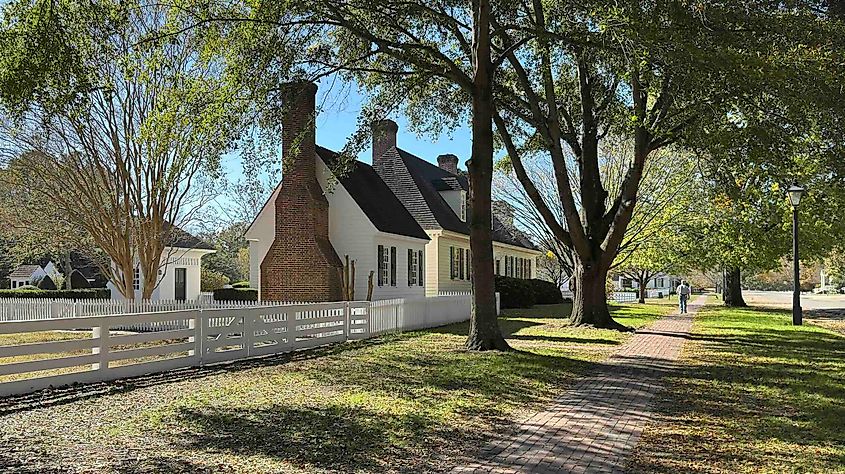
My base while exploring the Virginia Peninsula’s most historic communities was Colonial Williamsburg. I wasn’t just staying near this incredible recreation of the community that served as the capital of Virginia from 1699 to 1780. Instead, I had the good fortune to actually stay in one of the attraction’s Colonial Houses, a group of some 30 or so historic properties managed by the nearby (and extremely opulent) Williamsburg Inn.
I couldn’t have hoped for a better place to stay than the 18th-century century Kitchen-Forge once owned by physician Dr. Philip Barraud. Not only was I staying in the very heart of the world’s largest living history museum, but I also found out after sending an email to an old school friend in England that Dr. Barraud was an ancestor of his whose family had fled France to England before moving to Virginia in the 1700s. As he described it: “Yup, fully related if slightly separated by a few hundred years and a few thousand miles.” It really is a small world.
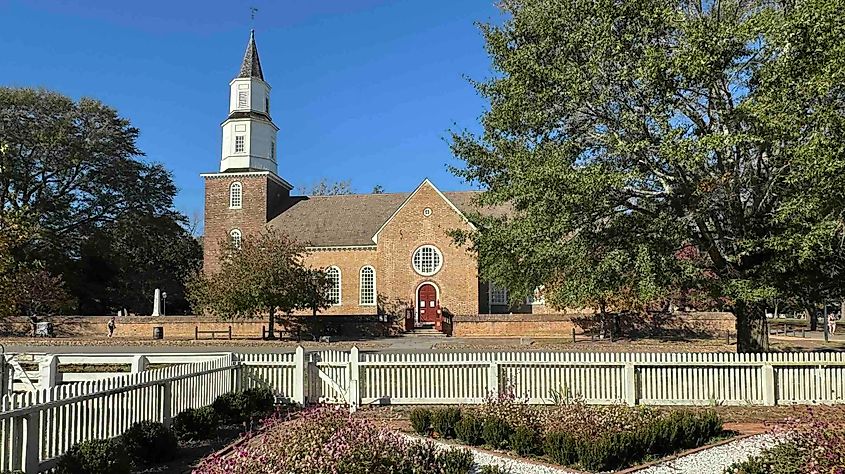
All that was left for me to do after getting my friend’s quick response was step out the door… and start exploring. Immensely walkable, the wide, tree-lined Duke of Gloucester Street is Colonial Williamsburg’s main drag, and a car-free paradise for pedestrians. Stretching for a mile from the Capitol at its east end past the Governor's Palace and ending in the shopping and dining area known as Merchants Square, it’s not a walk you want to rush.
While you can walk around Colonial Williamsburg for free (a benefit for the many locals I saw dog walking and jogging), getting into the attractions staffed by interpretive guides does require admission. But it’s worth every penny. Talking to a “Tinman” in the Tin Shop, one of over 300 restored or reconstructed buildings here, was enlightening. He shared the pressures of having to make, by hand, the utensils used by the Revolutionary Army, often without adequate compensation despite the trade’s unique skills. As he said, the wartime economy as the colonies struggled for their freedom was not flush with cash.

And then there was the town’s Tailor. Sitting cross-legged for hours on end to ensure Williamsburg’s “Gentlemen” were adequately attired in the latest 18th-century fashions, he willingly shared details of everything from the wealth (or lack thereof) of his clients to the techniques used in the 1700s to ensure satisfied clients. It's riveting, fascinating living history that truly draws you into the earliest years of America’s history.
When the urge to eat strikes (which it will after all that walking), grab a table at the King’s Arms Tavern. Located just a few minutes walk from the Capital (and around the corner from my cottage), this reproduction of Jane Vobe’s pub from 1772 features authentic period dishes that are simply delicious. Must-eats here include their famous Peanut Soupe, which I tried for the first (and definitely not the last) time; the stewed beef, based on a recipe from 1787; and for dessert, the excellent bread pudding.

And let’s not forget the eateries in the Merchants Square at the other end of Duke of Gloucester Street. My favorite? Hats off to the excellent Fat Canary, a classy restaurant that’s been attracting patrons since 2003 with dishes like its delectable seared foie gras as a starter, braised beef short rib with jasmine rice as the mains and rounded off with the dark chocolate mousse triangle.
There were, of course, so many other highlights of my visit to Colonial Williamsburg. The old Courthouse, where I watched a group of “Young Patriots” (aka, school kids) participate in a mock trial, is a must. So, too, is Bruton Parish Church, built in 1711 and one of the oldest Episcopal churches in America. Not only is it photogenic (I grabbed a great shot from the gardens across the road), but it also hosts regular music soirees such as candlelit concerts. And the Art Museums of Colonial Williamsburg featuring the DeWitt Wallace Decorative Arts Museum and the Abby Aldrich Rockefeller Folk Art Museum offer a deeper dive into colonial artistry and craftsmanship with their large collections. I spent at least three hours here and left feeling like I had just scratched the surface.
My key takeaway after two days of exploring this epic historic attraction? Take your time, put away the map showing the main points of interest, and let curiosity lead you. Almost the entire historic site is open for the curious, so do as I did: you see an open door, enter. You’ll find yourself literally transported back in time.
America Starts In Jamestown
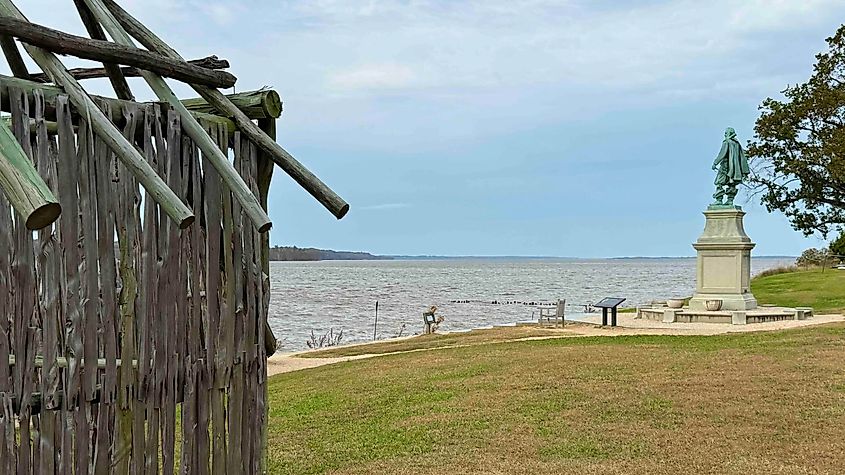
The most important destination on my journey was, of course, Historic Jamestowne. Stopping first at the attraction’s Visitor Center, I swotted up on America’s earliest colonial history through informative displays and artifacts recovered from the original settlement of 1607. From here, a scenic boardwalk wound its way through the marshland that surrounded the settlement, leading me to the 104-foot-tall Tercentennial Monument. Erected in 1907 for Jamestown’s 300th anniversary, the monument’s obelisk stands as a testament to the endurance and legacy of the settlers and their determination to carve a home out of this wilderness.
From here, I wandered through the site of the original James Fort, the palisades and remains of which were only rediscovered in 1994. It was here that settlers sought refuge in the colony's precarious early years when they faced disease, starvation, and hostile weather. The adjacent Memorial Church, also built in 1907, stands on the foundations of the original Jamestown Church from 1617 and makes for a stunning backdrop to the James River. Nearby, I encountered a reconstructed Powhatan house, a nod to the Indigenous peoples who played a pivotal role in Jamestown’s survival, plus still ongoing archaeological digs providing glimpses of long-lost structures with signage explaining their 17th-century context.
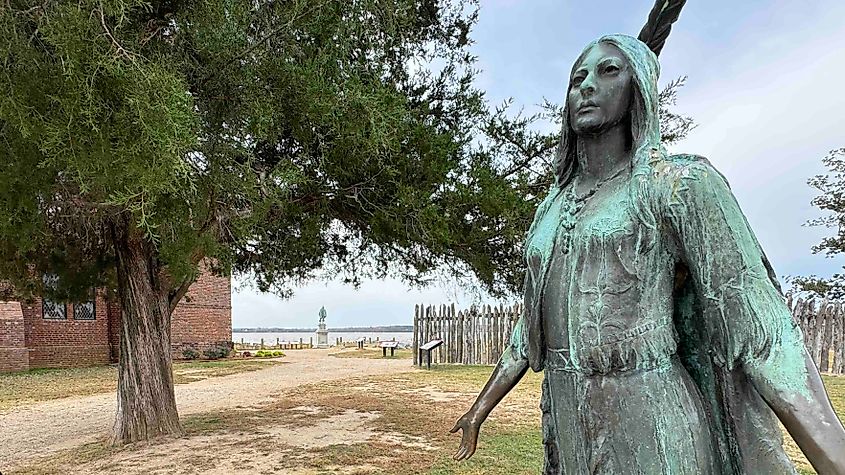
But the star of the show for me was the Archaearium Archaeology Museum, just a short walk from the fort site and a treasure trove of history. Opened in 2006, this world-class museum houses over 4,000 artifacts unearthed at Jamestown including weapons, tools, and personal items that tell the settlers’ stories. Highlights include a ceremonial halberd from the early 1600s, a child’s copper ring, and perhaps the most intense reminder of the human experience at the settlement, the skeletal remains of a teenage boy. Among the first to have landed here, archaeologists were even able to deduce his name (Richard Mutton) and where he came from (London) through original records.
After spending longer than anticipated viewing the museum’s enlightening exhibits, it was time to leave; but not before making sure I took photos of the site’s Captain John Smith and Pocahontas statues, commemorating two of the very real characters associated with Jamestown.
Yorktown And America’s Fight For Independence
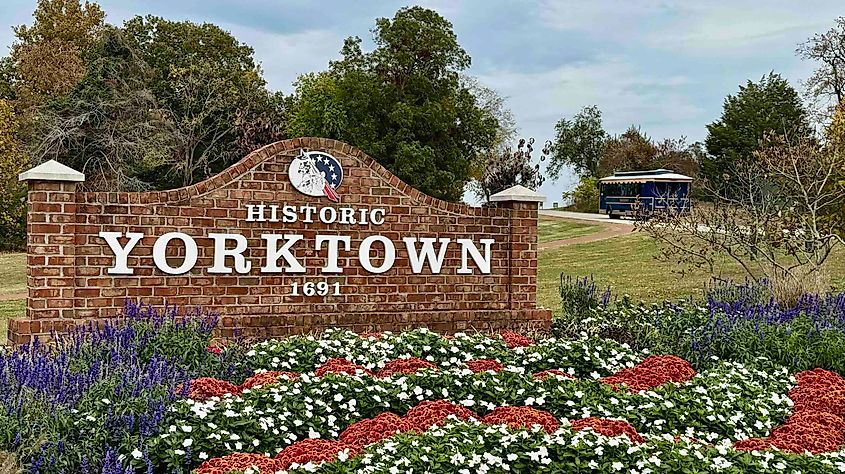
Another of Virginia’s most historically significant towns, Yorktown is perhaps best known as the site of the decisive battle that secured American independence during the Revolutionary War. It was in October 1781 during the Siege of Yorktown that American and French forces, led by George Washington and the Marquis de Lafayette, surrounded British troops under General Cornwallis, forcing their surrender. This stunning victory marked the effective end of the war and paved the way for the Treaty of Paris in 1783.
Established 90 years earlier, Yorktown was by the time of the battle a bustling colonial port, with its strategic location on the York River making it a hub for trade, particularly tobacco exports. Now a popular tourist town, my visit to Yorktown was every bit as rewarding and informative as Jamestown and Williamsburg, with a highlight being the opportunity to explore the scene of America’s victory at the Yorktown Battlefield. Part of the same Colonial National Historical Park that looks after Historic Jamestowne, it was quite the experience being able to walk the actual grounds where this final battle took place, viewing a series of preserved earthworks as I imagined what the battle must have been like.
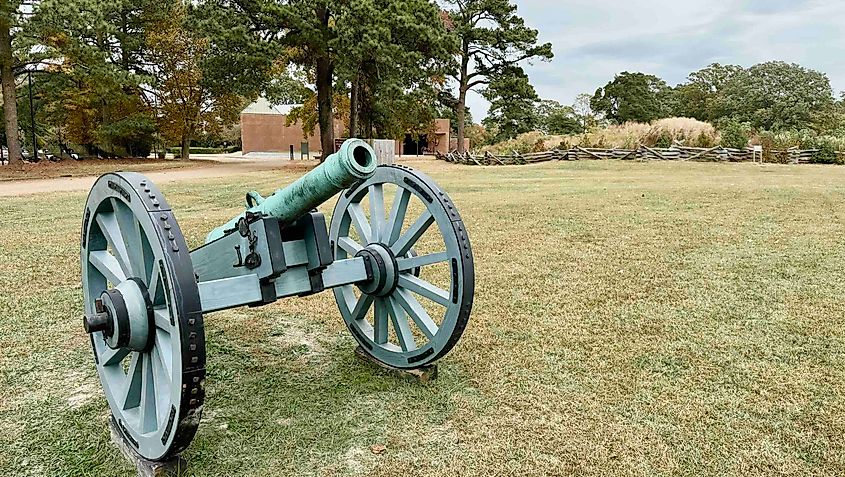
I’d already spent time exploring the fascinating displays of artifacts from the battle at the Yorktown Battlefield Visitor Center, as well as exhibits that effectively explained the importance of this strategic victory and its key role in enabling the fledgling country to gain its independence from the British Empire. Related attractions that I made sure to visit included nearby Moore House, where surrender negotiations were conducted, and the ornate Yorktown Victory Monument, built in 1884 to commemorate both America’s alliance with France and the victory itself.
The star of my Yorktown experience, though, was the spectacular Museum of the American Revolution. Opened in 2017 and just a few minutes drive or a 15-minute walk from Yorktown Harbor (a free shuttle service is also available connecting all Yorktown's major attractions), this world-class attraction answered everything I needed to know about this fascinating period of US history through its immersive exhibits detailing everything from the roots of the conflict to key players like George Washington, as well as the enslaved individuals, Native Americans, and everyday folk who lived in and around the area at the time.
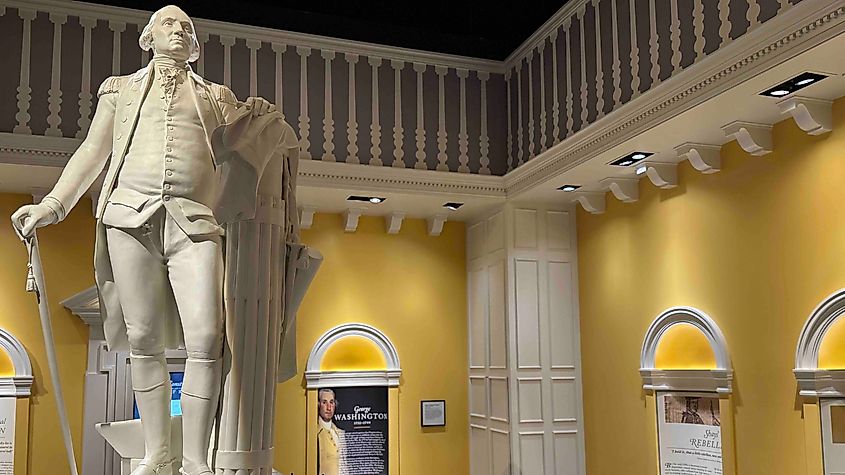
There’s also plenty to do around the museum grounds, too. I particularly enjoyed the recreation of the Continental Army encampment, complete with costumed staff eager to share the stories of the life of regular soldiers. Other highlights include a 1780s farm where I learned of the hardships faced by those behind the lines, and the artillery demonstrations where interpreters in period dress fire a replica 18th-century cannon (and yes, I was as excited as the schoolkids who also lapped up the experience).
I rounded off my visit to colonial-era Yorktown back at the town’s waterfront, parking at the free municipal lot on Ballard Street. Though a few minutes’ walk down to Yorktown Harbor, it was certainly worth it for the superb views over the town and the Coleman Memorial Bridge across the York River. As I now knew, the harbor played a crucial role as a strategic port during the Siege of Yorktown, as well as during the Civil War 80 years later.
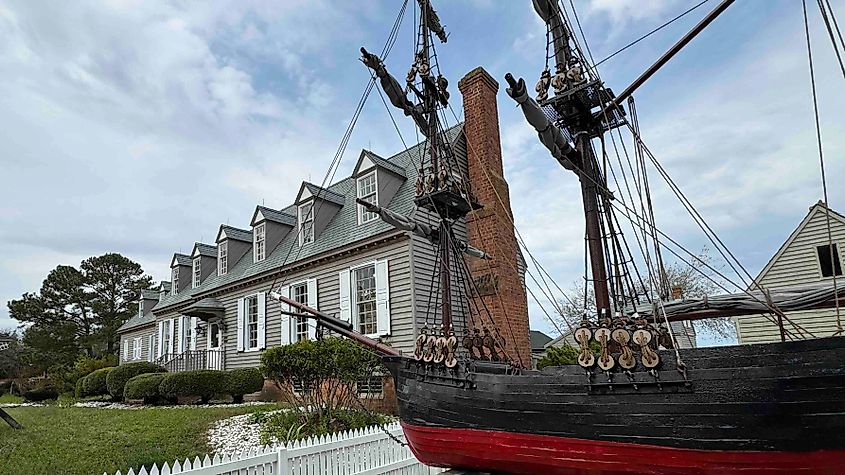
When I visited, though, it was an altogether different place, with recreational opportunities aplenty. Though there were no sailings the day I arrived due to unusually strong fall winds, I did manage to get some photos of the schooners Alliance and Serenity, replicas of 18th-century sailing vessels that offer scenic cruises along the York River. The Watermen’s Museum, though, was open. With exhibits relating to the river’s maritime past, as well as that of Chesapeake Bay further downstream, I learned a lot about the lives of the “watermen” and the fishing industry that shaped Yorktown.
Other highlights I checked out included Yorktown Beach, a clean and welcoming spot to relax and watch the world go by; and the lovely Riverwalk, a nearly three-mile trail connecting the town with the Museum of the American Revolution at one end and the Yorktown Victory Monument at the other. Feeling peckish, I stopped in at the recently opened Water Street Grille for a light bite of lunch before checking out the Yorktown Custom House and Grace Episcopal Church, built in 1697 and still in use to this day.
Tips And Tactics

Fresh from exploring Colonial Williamsburg, Jamestown, and Yorktown, here are a few tips and tactics I picked up along the way that may prove useful to you, too:
- Can you do the three historic sites in Virginia’s Historic Triangle in a day? Yes, but I wouldn’t recommend it. There’s simply so much to see and do here that you’ll easily be able to spend a day at each destination. If you can swing it, consider a stay in Colonial Williamsburg, roughly the mid-way point with both Yorktown and Jamestown an easy 20-minute drive away, and allow at least a day per destination.
- If you’re lucky enough to stay in one of the Colonial Houses or the super-luxe Williamsburg Inn, you’ll receive two complimentary passes providing admission to the many key attractions in Colonial Williamsburg (a value of $120).
- You can also save money with the purchase of a Historic Triangle Ticket which provides access to the Jamestown Settlement, a reproduction of Historic Jamestowne (also included), Colonial Williamsburg, Yorktown Battlefield, and the American Revolution Museum at Yorktown.
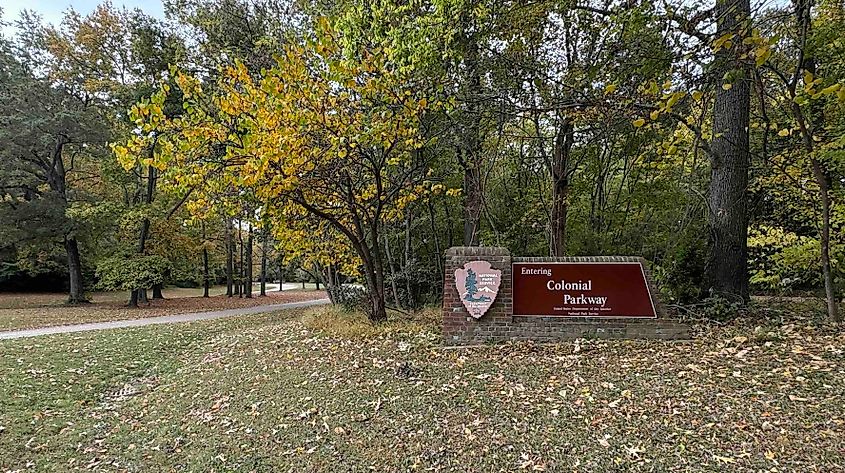
- For those traveling by car, the best way to drive between Williamsburg, Jamestown, and Yorktown is along the superb Colonial National Historical Parkway. Completed in 1957, this scenic 23-mile road connects all three sites, avoiding local traffic and communities. And it’s simply beautiful, with superb views over the James River and the lush Virginia peninsula. You’ll also see attractions like the Jamestown Glasshouse en route with its glassblowing demonstrations.
- For the latest news and info regarding travel in and around Williamsburg, Jamestown, and Yorktown, check out the Visit Williamsburg website.











